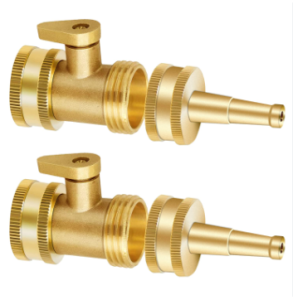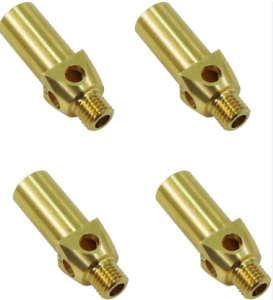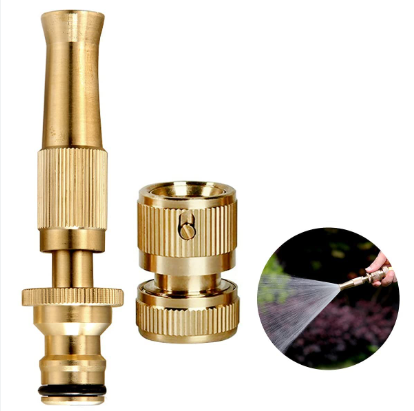Jet Nozzle
In the realm of fluid dynamics and engineering marvels, the jet nozzle stands as a testament to human innovation. With applications ranging from aviation and aerospace to industrial processes and propulsion systems, the jet nozzle plays a crucial role in shaping our technological landscape. As we delve into the intricate world of fluid dynamics and design, this article takes you on a journey to discover the finest jet nozzle creations, the principles that underpin their excellence, and the diverse domains that benefit from their prowess.
The Essence of Jet Nozzles
A jet nozzle, simply put, is a device that accelerates and shapes the flow of a fluid, typically a gas, by constricting its passage and then expanding it. The basic principles that govern the operation of a jet nozzle are rooted in fluid dynamics, specifically the Bernoulli’s principle and the conservation of mass and momentum. The narrowing of the nozzle increases the fluid’s velocity while decreasing its pressure, and upon expansion, the fluid achieves thrust. This fundamental concept serves as the foundation upon which the best jet nozzles are built.
The Pursuit of Efficiency
One of the primary criteria for determining the “best” jet nozzle lies in its efficiency. Engineers and designers strive to maximize the conversion of input energy (typically from a high-pressure source) into useful output thrust. The shape and dimensions of the nozzle play a pivotal role in achieving this goal. Nozzles with meticulously calculated contours and profiles ensure that the fluid’s expansion occurs optimally, extracting the greatest possible thrust while minimizing losses due to turbulence and shockwaves.
Supersonic Elegance
Jet nozzles find their most iconic applications in supersonic and hypersonic travel. The transition from subsonic to supersonic speeds introduces a realm of complex aerodynamics and shockwave phenomena. The best jet nozzles for supersonic flight are carefully engineered to manage these challenges. Variable geometry nozzles, such as those found in advanced fighter jets and spacecraft, allow for adjustments in real-time to ensure optimal performance across a range of speeds. The design intricacies involved in creating such nozzles push the boundaries of engineering, demanding precise calculations and cutting-edge materials.
From Sky to Space: Aerospace Marvels
In the realm of aerospace, jet nozzles are at the heart of propulsion systems that defy gravity’s constraints. Jet engines, both turbojet and turbofan, rely on efficient nozzles to channel exhaust gases and generate thrust. The evolution of these nozzles has been marked by innovations such as thrust vectoring, which imparts greater maneuverability to aircraft. Furthermore, the vacuum of space presents its own set of challenges, and rocket engines must contend with the absence of surrounding air. The best jet nozzles for space travel are meticulously engineered to ensure efficient propulsion and stability in the vacuum environment.
Beyond the Skies: Industrial Applications
While aerospace applications often steal the spotlight, jet nozzles find invaluable use in an array of industrial processes. From metallurgy and glass manufacturing to wastewater treatment, the controlled and directed flow of gases plays a pivotal role. The best jet nozzles for industrial applications consider factors such as heat dispersion, mixing efficiency, and precision delivery. These nozzles facilitate processes that are integral to modern manufacturing and contribute to increased efficiency and product quality.
Sustainable Skies: Environmental Considerations
In an era marked by growing environmental consciousness, the development of jet nozzles has begun to align with sustainable objectives. Researchers and engineers are exploring ways to optimize nozzle designs for reduced emissions and fuel consumption. By fine-tuning nozzle profiles and exhaust flow patterns, modern aviation aims to minimize its carbon footprint. Additionally, advancements in materials science contribute to the creation of lightweight yet durable nozzles, further enhancing fuel efficiency.
Computational Prowess: Simulating Excellence
The quest for the best jet nozzle is greatly aided by computational fluid dynamics (CFD) simulations. These simulations allow engineers to model and analyze the behavior of fluids within complex nozzle geometries. By virtually testing various designs and parameters, researchers can fine-tune nozzle configurations before physical prototypes are constructed. CFD-driven optimization has revolutionized the field, enabling rapid progress in nozzle design and performance..
Selecting the Perfect Jet Nozzle: A Comprehensive Guide
Choosing the right jet nozzle is crucial for optimizing various applications, from industrial processes to gardening and cleaning. This guide aims to provide you with a comprehensive understanding of the factors to consider when selecting the best jet nozzle for your specific needs.

Know Your Application:
Begin by identifying the primary purpose of the jet nozzle. Are you looking for a high-pressure nozzle for industrial cleaning, a nozzle for gardening and irrigation, or a specialized nozzle for firefighting? Understanding your application will help narrow down your options.
Consider Flow Rate and Pressure:
The flow rate (GPM) and pressure (PSI) of your water source significantly impact nozzle selection. Choose a jet nozzle that is compatible with your water source’s specifications to ensure optimal performance.
Nozzle Material:
Select a nozzle made from high-quality, durable materials such as stainless steel or brass. These materials offer better resistance to corrosion and wear, ensuring a longer nozzle lifespan.
Nozzle Type:
Different nozzle types serve various purposes. Common types include:

a. Solid Stream Nozzles: These provide a concentrated, powerful stream of water, ideal for heavy-duty cleaning and industrial applications.
b. Fan Nozzles: These produce a wide, flat spray pattern, suitable for light cleaning, watering, and irrigation.
c. Multi-Pattern Nozzles: These versatile nozzles offer adjustable spray patterns, allowing you to switch between different modes (jet, mist, shower, etc.).
d. Specialty Nozzles: Some nozzles are designed for specific tasks, such as foam application or pressure regulation.
Spray Angle and Pattern:
Consider the spray angle and pattern that best suits your application. Narrow angles are suitable for high-pressure cleaning, while wider angles are better for coverage and irrigation.
Compatibility with Accessories:
If you plan to use accessories like extension wands or telescoping poles, ensure that the nozzle’s design allows for easy attachment.
Maintenance and Cleaning:
Opt for a jet nozzle that is easy to clean and maintain. Nozzles with removable parts are often simpler to clean and unclog.
Cost vs. Quality:
While budget is a consideration, prioritize quality over cost. Investing in a durable, efficient nozzle may save you money in the long run by reducing maintenance and replacement expenses.
Reviews and Recommendations:
Read customer reviews and seek recommendations from professionals or peers who have experience with similar applications. Their insights can provide valuable information about the performance and reliability of different nozzle brands and models.
Conclusion
The evolution of jet nozzle technology stands as a testament to human ingenuity and determination. From the heart of aerospace engineering to the intricacies of industrial processes, jet nozzles have left an indelible mark on our world. The pursuit of efficiency, the elegance of supersonic travel, and the drive towards sustainability have collectively propelled the development of the finest jet nozzles. As technology continues to advance, the boundaries of what is possible in jet nozzle design will undoubtedly be pushed further, ushering in new eras of innovation and progress.
FAQs about the Best Jet Nozzle
What is a jet nozzle and why is it important?
A jet nozzle is a specialized attachment designed to control the flow of fluids, such as water or air, in a focused and high-velocity manner. It is commonly used in various applications like gardening, car washing, firefighting, and industrial processes. The choice of the best jet nozzle can significantly impact the efficiency and effectiveness of these tasks.
How do I determine the best jet nozzle for my needs?
Selecting the best jet nozzle involves considering factors such as the intended application (e.g., cleaning, irrigation, propulsion), desired flow rate, pressure compatibility with your water source, material durability, and nozzle design (adjustable vs. fixed pattern). Assessing these factors in relation to your specific requirements will help you choose the nozzle that best suits your needs.
What are some popular types of jet nozzles available?
There are several types of jet nozzles, each designed for different purposes. Some common types include straight-stream nozzles for precision spraying, fogging nozzles for fine mist creation, wide-angle nozzles for broad coverage, and rotating nozzles for efficient cleaning. Understanding the characteristics of each type can guide you toward selecting the best nozzle for your intended task.
How does the material of the jet nozzle affect its performance?
The material of the jet nozzle can significantly impact its durability and performance. Nozzles are often constructed from materials like brass, stainless steel, plastic, or rubber. Brass and stainless steel nozzles are known for their robustness and resistance to corrosion, making them suitable for heavy-duty applications. Plastic and rubber nozzles are typically lighter and more affordable, but may have limitations in terms of longevity under high-pressure conditions.
What maintenance is required for the best jet nozzle?
Proper maintenance is essential to ensure the longevity and optimal performance of your jet nozzle. Regularly clean the nozzle to prevent clogs from dirt, debris, or mineral buildup. Inspect for any signs of wear or damage, and replace any worn-out components promptly. Lubricating moving parts (if applicable) and storing the nozzle in a cool, dry place can also contribute to its longevity. Always refer to the manufacturer’s guidelines for specific maintenance instructions
